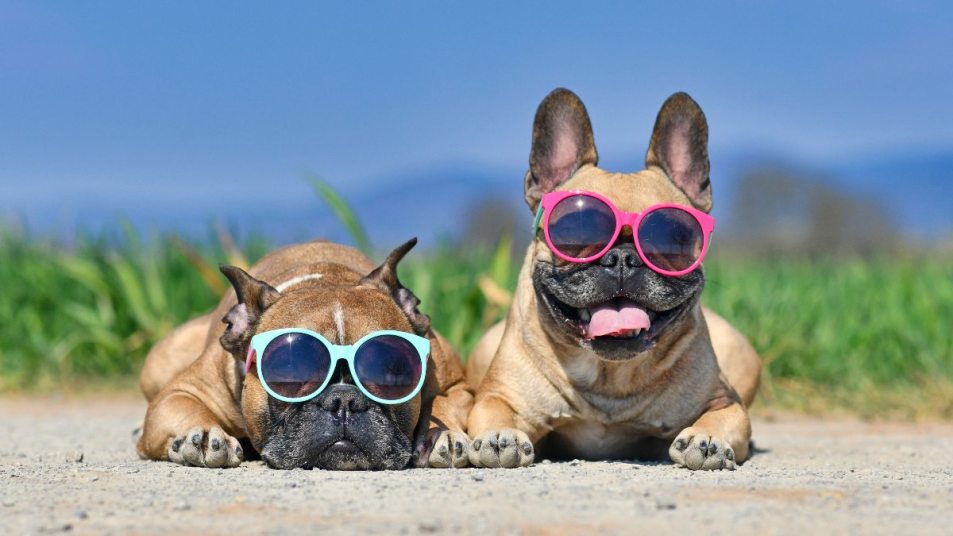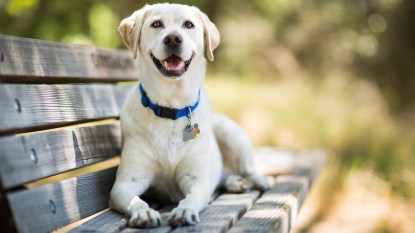Get Your Dog Inside if They Show These Dangerous Heat Exhaustion Symptoms

I have a dog who loves the winter. She’s a Samoyed, and her big, fluffy, white coat is a blessing in cold weather and a curse in summer heat. Figuring out when she needs to go back inside during the warmer months can be difficult, because she wants to stay out as long as possible.
Fortunately, we can prevent heat exhaustion in dogs and keep them healthy by learning the signs, knowing which breeds are the most susceptible, and using tools to cool our pups down.
Dogs That Are More Susceptible to Heat Stroke
As the American Kennel Club (AKC) states, these factors can make your dog more likely to suffer from heat exhaustion:
- Your dog is a short nosed (brachycephalic) breed, such as a Bulldog, Pug, Boston Terrier, Shih tzu, Boxer, or Cavalier King Charles Spaniel. A short nose and a flat face makes it much harder for a dog to pant efficiently and rid itself of heat.
- Fur. A pup is more likely to get overheated with a big coat.
- Obesity. If your dog is overweight, he or she will overheat more quickly.
- Exercise. If your dog is sprinting or running, don’t leave them outside in the summer for too long.
Keep temperature and humidity in mind as well. If you are feeling overheated or sticky because of humidity, your pup is probably feeling it even more.
7 Signs of Heat Exhaustion in Dogs
From experience, I know that my Samoyed is overheating if she slows down, seems less alert, and lets her tail droop. But there is more to know, according to the AKC. Keep these symptoms in mind if you’re on the lookout for heat exhaustion (and get your pet into a cool space as soon as possible):
- Panting. Very quick, heavy panting is a sign your dog can’t get rid of his or her heat quickly enough.
- Hypersalivation (drooling).
- Warm to touch.
- Red mucous membranes around the mouth.
- Rapid heart rate.
- Dry nose.
- Quiet or poorly responsive. Your pet may lay down and have difficulty sitting up.
More serious signs include:
- Vomiting.
- Blood from mouth or in stool.
- Seizures.
- Muscle tremors.
- Ataxia (staggering).
Call your vet immediately if your dog has one or more of these symptoms.
How To Cool Down Your Dog
The Veterinarian team at Veterinarians.org put together a list of eight different ways to cool down your dog:
- Create a cool space. If you’re indoors, get a fan or an air conditioner. If you’re outside, find a shaded area with cool ground.
- Hydrate. When you and your dog are out in the heat, keep clean, cold water handy.
- Pat down your dog’s body with a cold, drenched towel. If your dog hates water (or has a lot of fur), pat down just the legs and paws.
- Install misters on your garden hose. Using a mister is more gentle.
- Make a dog pool. Let your dog wade in the water at his or her own pace.
- Add ice to the water bowl.
- Make pup-sicles. Cool your pup from the inside out with popsicles that are dog friendly. I love this easy Pupsicle Starter Kit from Cooper’s Treats (Buy from Amazon, $29.99).
- Purchase a cooling mat. These mats have a special cooling gel that absorbs heat and keeps your dogs cool and comfortable. The one I purchased — the K&H Cooling Dog Bed (Buy on Amazon, $63.69 for a large) — took a while to set up because it is essentially a water bed, and requires a lot of water. However, it has held up for over a year and is still cool to the touch.













